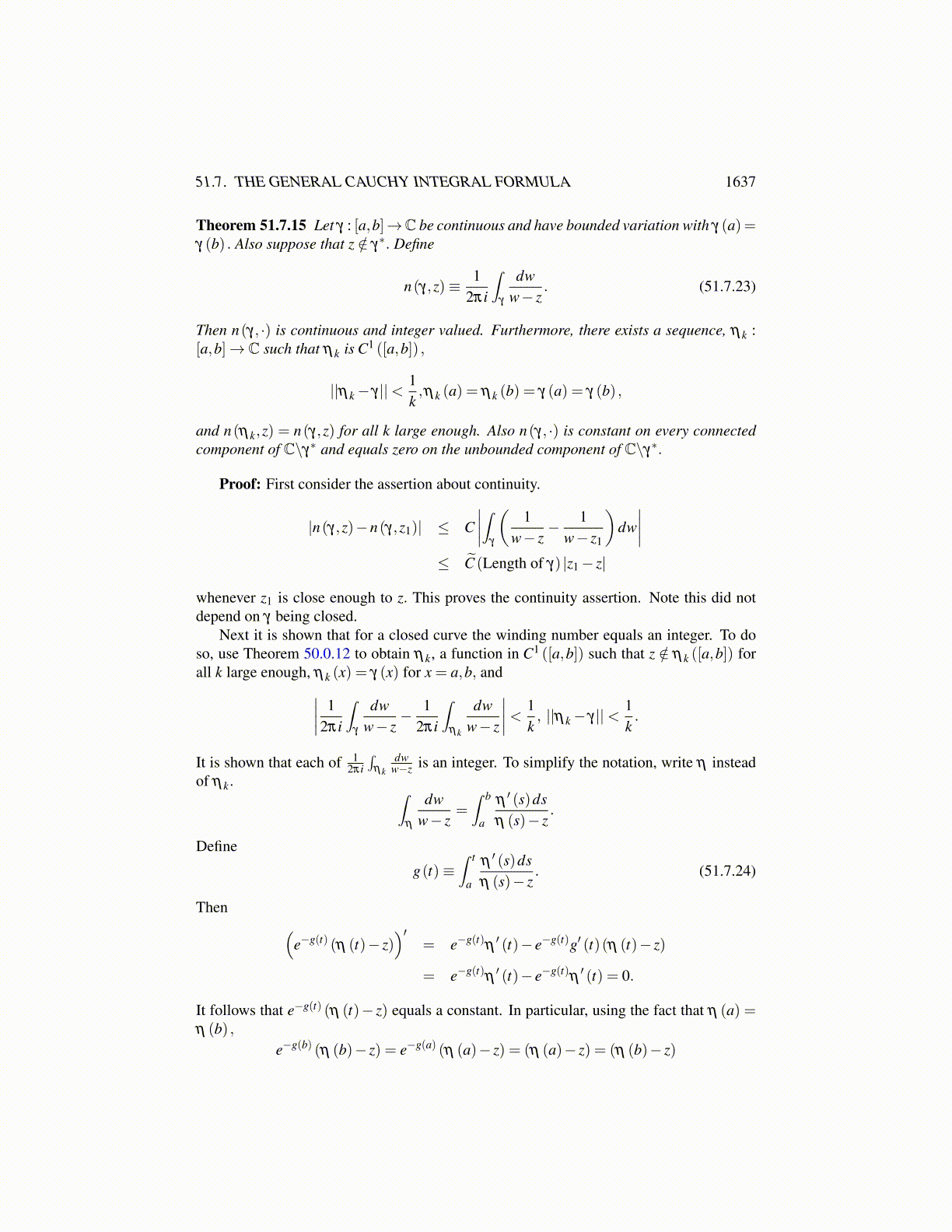
51.7. THE GENERAL CAUCHY INTEGRAL FORMULA 1637
Proof: Suppose B(z0,δ ) has no points of f (B′ (a,r)) . If f (B′ (a,r)) is not dense, thensuch a ball exists. Then for z ∈ B′ (a,r) , | f (z)− z0| ≥ δ > 0. It follows from Theorem51.7.8 that 1
f (z)−z0has a removable singularity at a. Hence, there exists h an analytic func-
tion such that for z near a,
h(z) =1
f (z)− z0. (51.7.22)
There are two cases. First suppose h(a) = 0. Then ∑∞k=1 ak (z−a)k = 1
f (z)−z0for z near
a. If all the ak = 0, this would be a contradiction because then the left side would equal zerofor z near a but the right side could not equal zero. Therefore, there is a first m such thatam ̸= 0. Hence there exists an analytic function, k (z) which is not equal to zero in someball, B(a,ε) such that
k (z)(z−a)m =1
f (z)− z0.
Hence, taking both sides to the −1 power,
f (z)− z0 =1
(z−a)m
∞
∑k=0
bk (z−a)k
and so 51.7.21 holds.The other case is that h(a) ̸= 0. In this case, raise both sides of 51.7.22 to the−1 power
and obtainf (z)− z0 = h(z)−1 ,
a function analytic near a. Therefore, the singularity is removable. This proves the theorem.This theorem is the basis for the following definition which classifies isolated singular-
ities.
Definition 51.7.10 Let a be an isolated singularity of a complex valued function, f . When51.7.21 holds for z near a, then a is called a pole. The order of the pole in 51.7.21 is M. Iffor every r > 0, f (B′ (a,r)) is dense in C then a is called an essential singularity.
In terms of the above definition, isolated singularities are either removable, a pole, oressential. There are no other possibilities.
Theorem 51.7.11 Suppose f : Ω→ C has an isolated singularity at a ∈ Ω. Then a is apole if and only if
limz→a
d ( f (z) ,∞) = 0
in Ĉ.
Proof: Suppose first f has a pole at a. Then by definition, f (z) = g(z)+∑Mk=1
bk(z−a)k
for z near a where g is analytic. Then
| f (z)| ≥ |bM||z−a|M
−|g(z)|−M−1
∑k=1
|bk||z−a|k
=1
|z−a|M
(|bM|−
(|g(z)| |z−a|M +
M−1
∑k=1|bk| |z−a|M−k
)).